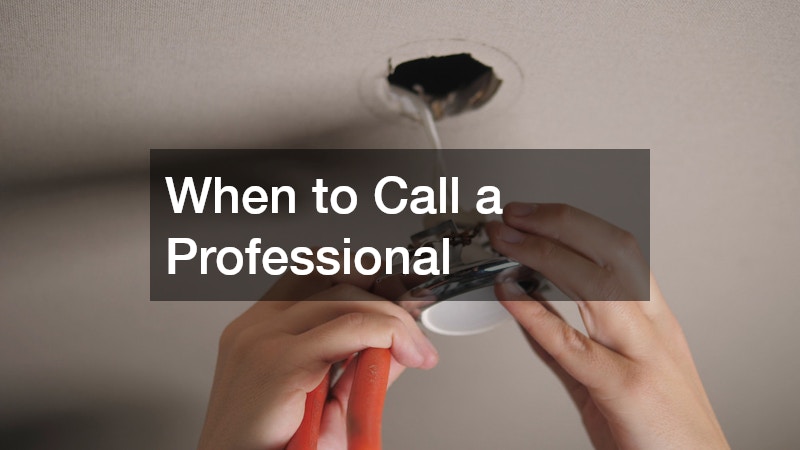Electricity powers nearly every aspect of our daily lives, from the lights we turn on in the morning to the devices we use throughout the day. While it can be tempting to tackle electrical projects yourself, it’s important to have a solid understanding of basic wiring principles before you begin. Even simple mistakes can result in hazards, so learning the fundamentals can help you work more confidently and safely—or know when to call an electrician.
Understanding the Flow of Electricity
At its core, electricity flows in a circuit—a complete loop that starts at a power source, passes through conductors, and returns to the source. For most homes, power comes from the utility company into a service panel, which distributes electricity through various circuits in the building.
In basic wiring, you’ll work with three main types of wires:
-
Hot wires (often black or red) carry current from the power source to devices.
-
Neutral wires (usually white) return current to the source, completing the circuit.
-
Ground wires (green or bare copper) provide a safe path for excess electricity, reducing the risk of shocks.
Knowing how these wires function—and their standard color codes—helps ensure you connect them correctly.
Tools and Equipment for Wiring Work
Before attempting any wiring, having the right tools is essential. A few common items include wire strippers, screwdrivers, pliers, voltage testers, and electrical tape. Wire connectors, also called wire nuts, are used to join wires securely.
A voltage tester is especially important because it confirms whether a circuit is live before you touch it. This step should never be skipped, as it is a primary safety measure.
Safety First: Key Precautions
Working with electricity carries risks, so safety should always come first. The most critical step is to turn off power at the breaker before beginning any work. Simply turning off a light switch is not enough—electricity can still be flowing through the wiring.
Always double-check with a tester to confirm no current is present. If you’re unsure about a task, it’s better to consult an experienced electrician than risk an accident. Personal protective equipment, such as insulated gloves and safety glasses, can also help reduce risk.
Common Wiring Configurations
In homes, you’ll encounter a few standard wiring setups. One of the most common is series wiring, where electricity flows through devices one after another. While easy to wire, it has the drawback that if one device fails, the entire circuit stops working.
Parallel wiring is more common in residential systems. Here, devices are connected in such a way that each one has its own independent path to the power source. This means one device can fail without affecting the others, which is why it’s the preferred configuration for most lighting and outlet circuits.
Another important configuration is three-way switching, which allows you to control a single light from two different switches—common in hallways or staircases. While slightly more complex, understanding the wiring pattern makes troubleshooting and installation much easier.
Reading Wiring Diagrams
Wiring diagrams are like maps for electrical systems. They use symbols to represent devices, wires, and connections. Learning to read these diagrams allows you to follow existing wiring or plan new installations accurately.
For example, a switch might be represented by a simple “S” symbol, while outlets and light fixtures have their own standard icons. These diagrams also indicate how wires should be connected, helping avoid mistakes that could cause short circuits or overloads.
The Role of Circuit Breakers and Fuses
Circuit breakers and fuses protect wiring from overheating and causing fires. When too much current flows through a circuit—due to too many devices being plugged in or a fault—the breaker trips or the fuse blows, cutting power to prevent damage.
Each breaker in your electrical panel corresponds to a specific circuit in the building. Labeling these clearly makes future work much safer and more efficient. If a breaker repeatedly trips, it’s often a sign of an underlying wiring problem that needs professional attention.
When to Call a Professional
While basic wiring knowledge is valuable for small repairs or understanding how your home works, certain projects require advanced expertise. Rewiring an entire home, adding new circuits, or upgrading a service panel should be handled by a licensed electrician. These professionals have the training, tools, and safety knowledge to handle complex jobs without risk.
Even if you enjoy DIY projects, it’s important to know your limits. Calling in a pro doesn’t just save time—it can also ensure the work meets local building codes and passes inspections.
Understanding basic wiring knowledge empowers you to perform small electrical tasks safely and communicate effectively with professionals. From recognizing wire colors to reading diagrams, these skills form the foundation for safe and functional electrical systems. However, safety should always take priority—if a task feels beyond your comfort level, seek help from a qualified electrician.
By combining basic knowledge with respect for the dangers of electricity, you can maintain your home’s electrical system more confidently and avoid costly or dangerous mistakes.

